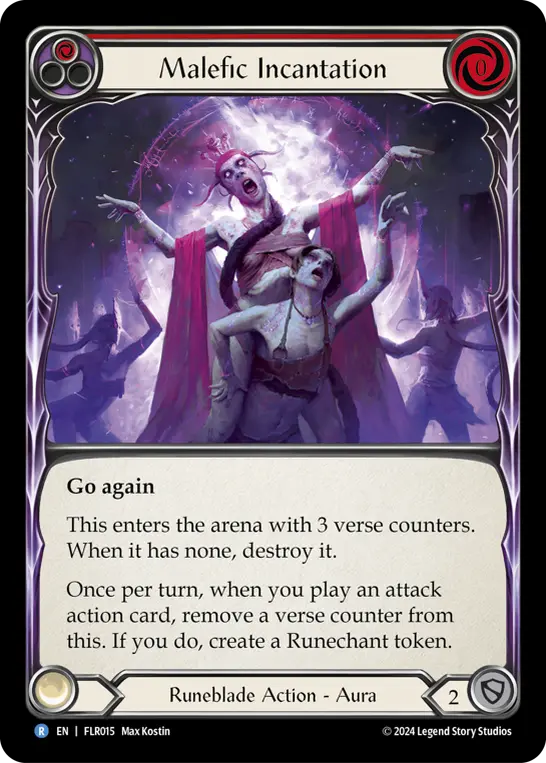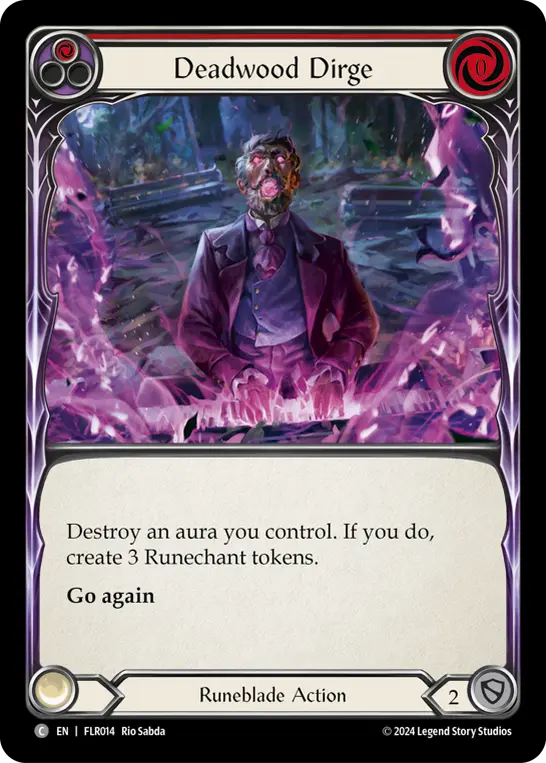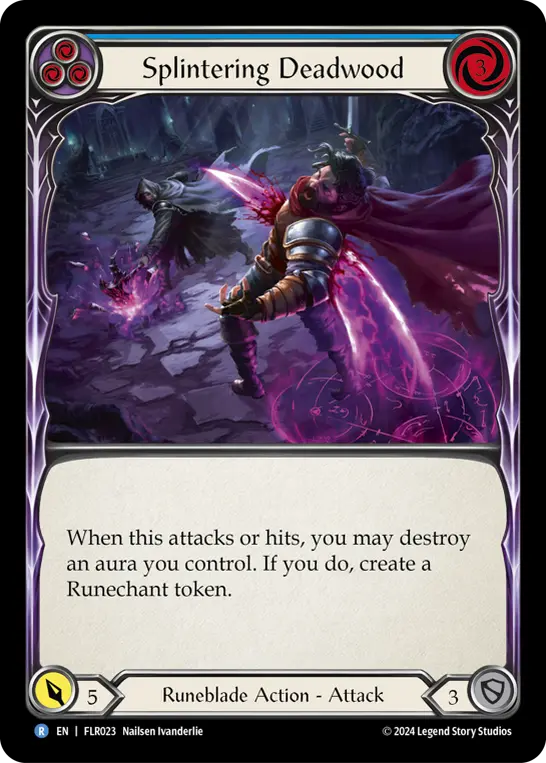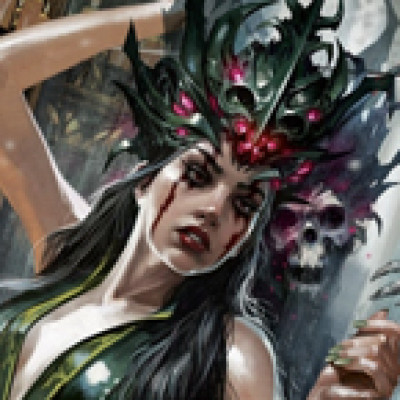Since his debut in 2021, not much had changed about Chane. Save for a few additions, the Living Legend iteration of the deck has pretty much reflected the Classic Constructed lists of old: Seeds of Agony, Rift Bind, and the like. However, change is in the air. A new version of Chane has been creeping up on the format, waiting in the shadows for its time to shine.



Inspired by the Vynnset decks that have similarly been looming in the shadows of Classic Constructed, Rune Gate Chane - or ‘Chanegate’, as I like to call it - ditches the low-to-the-ground flurry of synergistic attacks for the huge rune gate attacks that came with Dusk till’ Dawn; and with a healthy pinch of tricky disruption and powerful enablers, the deck is possibly the strongest force to be reckoned with in the format right now.
In this guide, I’m going to go over everything you need to know about Chanegate. From start to finish, I’ll take a look at why this deck is making waves, as well as give you a rundown of what you should know about playing the deck so you can harness the power of rune gate.
What is Chanegate?
Rune Gate Chane, or Chanegate, is a deck that utilizes the mechanic ‘rune gate’ to send massive attacks from our banished zone for a low cost. While similar to Vynnset in Classic Constructed, the strength of Chanegate comes in its ability to easily send out multiple huge attacks in one turn while also being able to keep your banished zone full of attackers to continue the onslaught turn after turn. We do this primarily by using Chane’s activated hero ability:
Once per Turn Action - Create a Soul Shackle token: Your next Runeblade or Shadow action this turn gains go again.
Go again.
This lets us give go again to an action every turn, while also creating a Soul Shackle - which will banish a card from the top of our library at the start of our turn. This, with the existence of blood debt, means that Chane decks need to be quick and efficient to make sure we can win the game before we lose to our deck.


Traditionally, Chane decks are built to be able to play a bunch of low-cost actions from your banished zone to be able to have huge turns of chaining attack actions and non-attack actions. Chanegate essentially forgoes this for rune gate, which allows us to send much bigger and more disruptive attacks at the cost of having to exert ourselves a bit more to set up Runechants for rune gate.
We do this through cards like Malefic Incantation and Read The Runes - the latter of which we can give go again with Chane. But the main card to keep an eye out for here is Deadwood Dirge, a card that lets us control our Soul Shackle count to stop our deck from destroying us while also giving us a healthy number of Runechants.



The Decklist

Weapons
- Rosetta Thorn (1)
Equipment
- Carrion Husk (1)
- Ebon Fold (1)
- Crown of Providence (1)
- Dyadic Carapace (1)
- Grasp of the Arknight (1)
- Balance of Justice (1)
- Dance of Darkness (1)
- Spellbound Creepers (1)
- Vexing Quillhand (1)
Loadout
- Art of War (Yellow) (3)
- Deathly Wail (Red) (2)
- Bounding Demigon (Red) (3)
- Splintering Deadwood (Blue) (2)
- Envelop in Darkness (Red) (2)
- Revel in Runeblood (Red) (3)
- Widespread Ruin (Red) (3)
- Read the Runes (Yellow) (1)
- Envelop in Darkness (Blue) (2)
- Cull (Red) (3)
- Succumb to Temptation (Yellow) (3)
- Read the Runes (Red) (3)
- Deadwood Dirge (Red) (3)
- Deadwood Dirge (Yellow) (3)
- Mauvrion Skies (Blue) (3)
- Eloquent Eulogy (Red) (3)
- Shadow Puppetry (Red) (1)
- Spellblade Assault (Blue) (3)
- Machinations of Dominion (Blue) (3)
- Shadow of Ursur (Blue) (3)
- Invert Existence (Blue) (3)
- Malefic Incantation (Red) (3)
- Putrid Stirrings (Red) (2)
- Widespread Destruction (Yellow) (3)
- Vantom Wraith (Red) (3)
- Vantom Wraith (Blue) (1)
- Soul Reaping (Red) (1)
- Widespread Annihilation (Blue) (2)
This current list is a fork of Cody Williams’s Calling Chicago list that has a few changes based on testing and my Skirmish experiences. It was initially designed to add Cull post-The Hunted, but I’ve made a few changes and have been tinkering with other cards behind the scenes. I’ve kept the list pretty standard here as a base for starting with; the list is pretty tight already, and any card swaps I’ve done are 1-for-1 swaps of the same role.



We need to make sure we either have a blue or at least a Runechant enabler in every hand to be able to keep consistent pressure on our opponent, otherwise, the deck will start to run out of steam and fall under any opponent that can send any pressure. Importantly, the one change I’ve made is switching Deathly Duet for Splintering Deadwood, as I value being able to control Soul Shackles over the value that Duet provides if I need to play one or the other - but you’re generally pitching this card anyway, so I feel as though the difference is just a choice of preference.
The Strategy
Chanegate isn’t as easy as just playing random cards from your banished - you need to be able to plan and sequence every turn, and make sure that you’re able to adapt to whatever your opponent is doing as well.
Generally, there are two ways to play this deck, depending on the matchup:
- Aggressive: These matchups are a race, and generally, we want to send as many attacks as possible in one turn to be able to outrace our opponent while they whittle us down. We can afford to block less and send back more, and play a lot of go again enablers to be able to facilitate constant high-damage turns to keep our opponents on the back foot.
- Setup: These matchups are less about sending out our whole hand and more about planning carefully to get the most out of each attack we play. This might mean waiting to accrue more cards in banished, or it might mean trying to build up enough Runechants to fly over your opponent’s arcane barrier before committing to an attack. These matchups are more difficult, and get more difficult yet depending on how much disruption your opponent has.
In any case, a fundamental understanding of value and numbers in Flesh and Blood is going to be important for both of these strategies. Understanding how much damage you can deal in a given turn and defending accordingly is important throughout the game, but it becomes a lot more critical when you have the ticking time bomb of blood debt adding pressure to your gameplay.
Another important factor is risk prioritization. In Living Legend, a lot is going on, and there's a lot that you have to be aware of - but some things are far more relevant than others. On top of this, the best way to stop your opponent from doing some things is by getting them closer to a null life total. Being aware of when you need to play more passively and react to things happening in the game - more obvious cases being attacking Dromai’s dragons or using Widespread Destruction to destroy an arsenal that you know holds something impactful - while giving up some aggression for a turn will go a long way.


Rosetta Thorn is a key card here, as it’ll allow us to send extra bits of split damage throughout the game at relatively low cost. The 2 damage bleeds over any deck running AB1, and it’s an incredibly hard card to block out completely. Using this in key turns after a couple of big attacks will add up over time and will give you inevitability, which puts your opponent under pressure and means they’ll need to invest more into blocking you out (or risk death).
Finally, it's best not to rely on your Soul Shackles to dictate your gameplan, as much as that's possible. Even if this means taking extra damage from blood debt or having to play cards from your hand at their normal cost, Soul Shackles can sometimes work against you and banish non-playables. With this, it’s important to go into every turn with a gameplan of ‘What happens if my Soul Shackles fail me?’, so you can mitigate that fail state as much as possible.
Sometimes, your Shackles will just screw you into a loss, with no way back into the game. But there are often things that you can do to prepare for this. If you’re on a low Soul Shackle count, you can keep an attack in your banished for an extra turn, or arsenal a Cull to use for a setup turn. While at first these may seem like sub-optimal plays, these small decisions will be what ends up leading you to victory.
The Matchups
Against Aggro - Zen, Lexi, Aurora, Dromai, Viserai, Dash, Briar
- Succumb to Temptation +3
- Shadow Puppetry +1
- Bounding Demigon (red) -1
Succumb to Temptation is a great disruption tool, and Shadow Puppetry is a good go again enabler to help get more attacks out.
- Vexing Quillhand in vs. Runeblade
- Balance of Justice in vs. Zen, Dromai, Lexi, Dash, and any other deck you suspect may run Art of War


Against Non-CYB Setup - Starvo, Oldhim (sans CYB), Ira, Florian
- Deadwood Dirge (yellow) +3
- Putrid Stirrings (red) +2
- Shadow Puppetry +1
- Widespread Destruction -3
We bring in cards that can help us set up more Runechant damage or send big attacks that can deal lots of damage through blocks and disruption.
- Vexing Quillhand in vs. arcane damage


Count Your Blessings - Oldhim, or any other CYB decks you might encounter
- Deadwood Dirge (yellow) +3
- Invert Existence +3
- Bounding Demigon (red) -1
- Envelop in Darkness (red) -2
We play this the same as other setup games, but just make sure to keep an Invert around to get rid of CYB as fast as possible.

Combo Wizard - Kano, or any other combo-centric Wizard
- Ebon Fold, Dyadic Carapace, Vexing Quillhand, and Dance of Darkness
- Deadwood Dirge (yellow) +2
- Read the Runes (yellow) +1
- Invert Existence +3
- Cull -3
I don’t like Cull in this matchup, as even though you can banish the last card in response to Ragamuffin’s Hat, an experienced Kano will be able to play around it, leaving Cull as an AB1 card in your hand a lot of the time.


Iyslander
- Ebon Fold, Dyadic Carapace, Vexing Quillhand, and Dance of Darkness
- Succumb to Temptation +3
- Deadwood Dirge (yellow) +3
- Read the Runes (yellow) +1
- Envelop in Darkness (red) -2
- Widespread Destruction -2
This matchup is similar to Kano, but we bring in tools like Succumb to Temptation to try to race Iyslander and disrupt her on key turns.


Prism
- Balance of Justice
- Deadwood Dirge (yellow) +3
Balance of Justice lets us draw after a Tome of Divinity, and Deadwood Dirge gives us extra reach to pop Spectral Shields.

Closing Time
Chanegate is a powerful deck that is rapidly rising to the throne of the Living Legend format. It can be rapid and pack a punch with its efficient attacks that can be played from banished. With the new disruptive tools available to Runeblade, Chane can also take control of the game and make sure he’s one step ahead of the opponent.
With his dominance over the current Skirmish season, in which the Living Legend format is becoming more popular than ever, Chane is currently the one to keep an eye on. But, does Chanegate have what it takes to remain atop the format? Time will tell, but I’ll definitely be doing my best to help push the deck to new heights.




